Hackster.io Review: Hands-On with the RasPad 3, an All-in-One Tablet Conversion Kit for the Raspberry Pi 4

The Raspberry Pi family of single-board computers (SBCs) has a well-deserved position at the heart of a range of hobbyist and educational programs, but does come with one slight drawback: Supplied as a simple circuit board, it's pocket sized without being particularly portable — until you add a display, keyboard, mouse, and battery.
It's no surprise to find third-party companies and hobbyists stepping up to fill in the hole with tablet and laptop conversion kits, and in 2018 SunFounder raised over $610,000 on crowdfunding site Kickstarter to bring the RasPad to market. Now, the company's back on Kickstarter with the RasPad 3 — but has it learned the lessons of its predecessors?
The Hardware
The RasPad 3 is designed to offer a considerable upgrade over the original RasPad, starting with support for the Raspberry Pi 4 Model B range of SBCs. Almost every feature of the Raspberry Pi 4 is broken out, with a few notable exceptions: There's no support for the Display Serial Interface (DSI) connector, no composite video output, only three USB ports, and there's no access to the Power over Ethernet (PoE) pins.
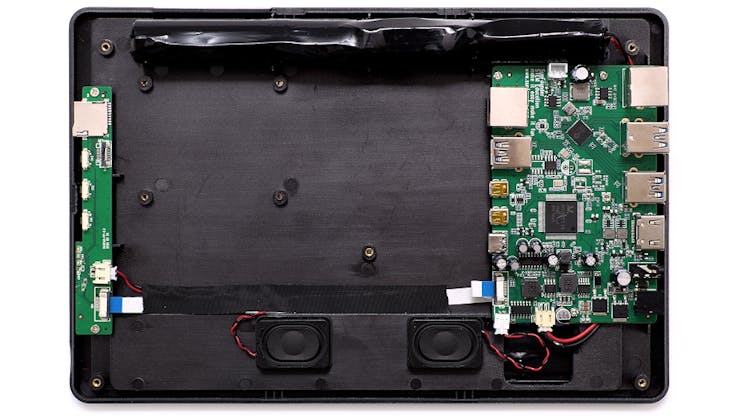
Everything else, though, appears at either edge of the tablet body via two daughterboards: The primary board handles charging the internal three-cell 3Ah lithium-polymer battery, offers analog audio output via 3.5mm jack, wired Ethernet, three USB 3.0 ports — which share a single USB 3.0 lane back to the Raspberry Pi inside — and, new for the upgraded model, a full-size HDMI output for a secondary display. A smaller breakout board on the other side offers LEDs for battery monitoring, buttons to control power, brightness, and volume, and an externally-accessible microSD slot.
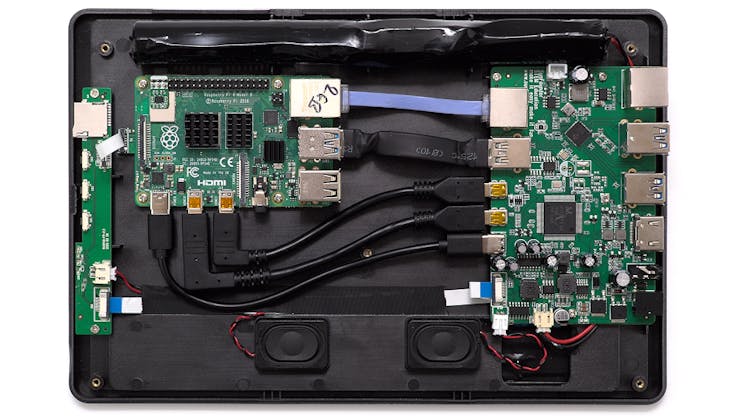
Internally, the Raspberry Pi mounts behind the 10.1in 1280x800 IPS capacitive ten-point touch display and connects to the secondary board via a clever microSD-shaped PCB and ribbon cable and the primary board via a USB 3.0 cable, Ethernet cable, USB Type-C cable, and two micro-HDMI cables — one for the on-board display and one for the external HDMI output. There are two small speakers which fire downwards through the rear shell of the case and provide a surprisingly loud output — albeit treble-heavy.
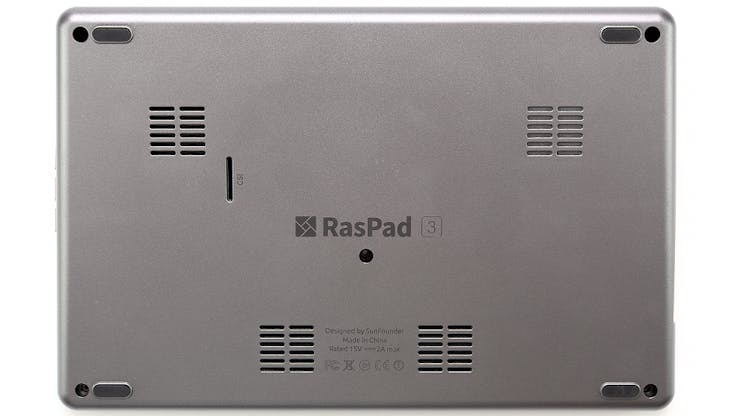
Assembly is relatively straightforward, though getting the rear cover in place takes a bit of care in order to avoid catching the USB and power cables in the centre retaining screw — a screw which, like the others, you fit using a helpfully bundled screwdriver. Three heatsinks are also supplied, for the Raspberry Pi's system-on-chip (SoC), the RAM, and the USB 3.0 controller — but not, unfortunately, the hot-running power-management IC (PMIC) — with cooling further aided by a small fan attached to the rear of the case, another upgrade over the original.
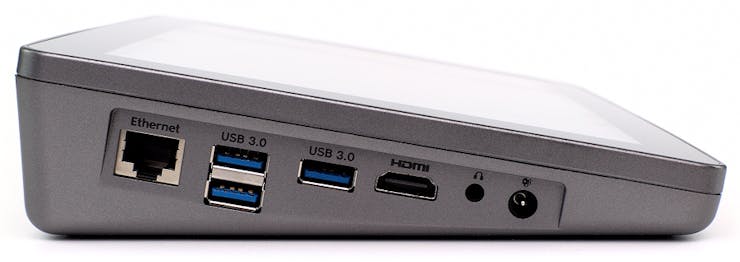
Overall the tablet measures about 270x127mm with an odd wedge shape which goes from 22mm at the front to 47mm at its widest. It's a shape which makes it easy to stand up on a desk as an upright display and which holds it at a gentle angle for flat use — but which means it's awkward to use handheld like a traditional tablet.
Design Flaws
Sadly, there are a few design flaws to note. Access to the Raspberry Pi's general-purpose input/output (GPIO) header, for one, is provided by passing a 40-pin ribbon cable through a cut-out in the rear of the case. If you assembled it without a cable — which isn't provided in the bundle - you'll be taking it apart again to fit it, and if you then want to take the RasPad 3 somewhere without the cable you'll be undoing and redoing the five retaining screws for a third time.

There's a bigger flaw, too: The cooling fan is, for some reason, held proud of the rear of the case by four plastic stand-off pillars. While this may help to prevent noise — though, sadly, the fan is still clearly and annoyingly audible — it brings the blades into contact with the bundled heatsink on the SoC, preventing them from turning. The only way to get the fan to work is to remove the case's screws yet again and crack the case slightly - or, for a more permanent fix which doesn't ruin the RasPad's potential as a portable computing device, file the plastic pillars down.
UPDATE2020-09-14: SunFounder has notified us that the fan issue is more quickly resolved than that: The fan should be installed the other way up as an intake rather than an outtake, in which configuration the pillars insert partway into the fan and reduce its height enough for the heatsink to clear the blades. Changing the configuration on the test unit confirmed this, though had no measurable impact on the heat generated during the below-graphed stress test benchmark.

The fan isn't exactly optional, either: During a thermal torture test, with the case cracked to allow the fan to run, the RasPad 3 was able to keep the Raspberry Pi 4 below the 80°C soft-throttle point — but when the fan was jammed, the SoC reached 80°C and began throttling after just one minute - and by two and a half minutes into the test had begun throttling as low as 600MHz from the chip's stock 1.5GHz.
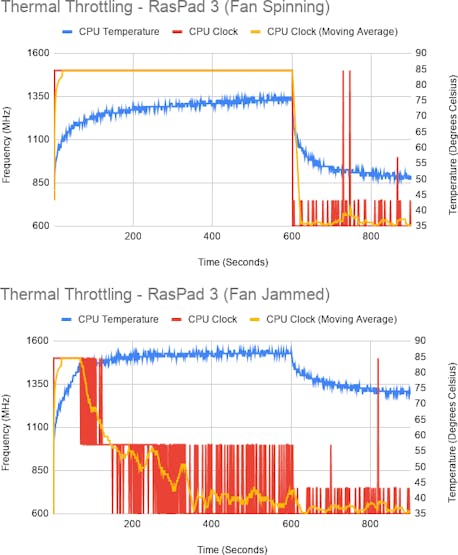
The review unit supplied had yet another issue, too: A faulty Ethernet port. While this is almost certainly a simple hardware failure rather than a design issue, it points to potential quality control problems — similar to the reliability and longevity issues which can be found in complaints made on the original RasPad's Kickstarter campaign, though ones which SunFounder to its credit appears to have worked to address with replacement hardware.

The final issues are more niggles than true flaws: A bundled accelerometer shim, installed on the Raspberry Pi 4's GPIO header, allows the tablet to automatically orient the display as you rotate it — but it only affects the Raspberry Pi's video output, not the on-screen display for adjusting the brightness and volume. There's no link between the battery management circuitry and the Raspberry Pi, either: When the battery is running low, you'll see an on-screen overlay but it won't trigger a safe shutdown; nor will telling the Raspberry Pi 4 to shut itself down actually turn the tablet off until you press and hold the power button on the side — and if you forget, you can expect the battery to have drained completely by morning.
Those eager to take advantage of the RasPad 3's dual-display capabilities have another caveat to consider, too: Connecting an external display to the HDMI port works perfectly well, except it disables the primary display's touch capabilities.
The Software
While SunFounder isn't bundling a microSD — or a Raspberry Pi 4, for that matter — with the RasPad 3, it has provided a customised operating system as a disk image on its website. Written to a microSD and inserted into the RasPad 3, it reveals itself as a tweaked version of the Debian-based Raspberry Pi OS as of the 2020-05-27 release.

SunFounder's contribution is primarily a modified menu, designed for touchscreen use. After a short setup process of choosing location and language from the two options of English and Chinese — a process which does not, unfortunately, set the regulatory domain for Wi-Fi operation, leaving Wi-Fi disabled until you use the Raspberry Pi Configuration Tool to configure it - you'll see a full-screen icon-based interface. Tap any category to switch the icons, tap any icon to load the program — which then reveals the standard Pixel desktop behind, albeit with customized colors and a RasPad wallpaper.
Another tweak is the inclusion of an on-screen keyboard, or rather two: Running selected programs pulls up a dark-theme large-interface on-screen keyboard, but other programs — including the Terminal — don't bring the keyboard up. These rely on a different keyboard, accessed through an icon in the system tray, which has a smaller interface and a light theme. In both cases, though, they take up at least half of the usable display — and with a resolution of 1280 x 800, it doesn't leave a lot of room for your programs.
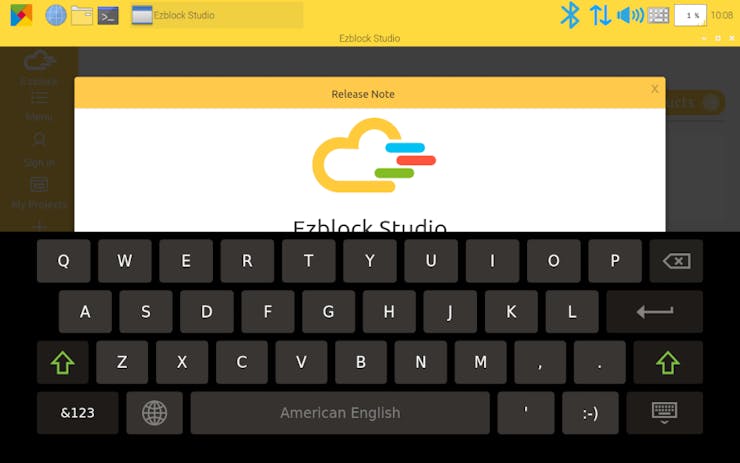
The bundled software is the standard Raspberry Pi Operating System fare, including the long-abandoned Minecraft: Raspberry Pi Edition alpha. Sadly, actually using this is impossible: Any attempt to use the touch screen to control your character just results in digging straight down to bedrock.
The custom OS has other issues, too. A FAQ icon should provide quick access to on-device help, as a supplement to the assembly-focused printed manual; in testing, though, it simply brought up a blank screen. The touchscreen works as expected, except it doesn't hide the mouse cursor — leaving it on-screen at whatever point was last tapped. The build is based on the 32-bit release of Raspberry Pi OS, leaving performance on the table — particularly for anyone who has splashed out on the 8GB model.
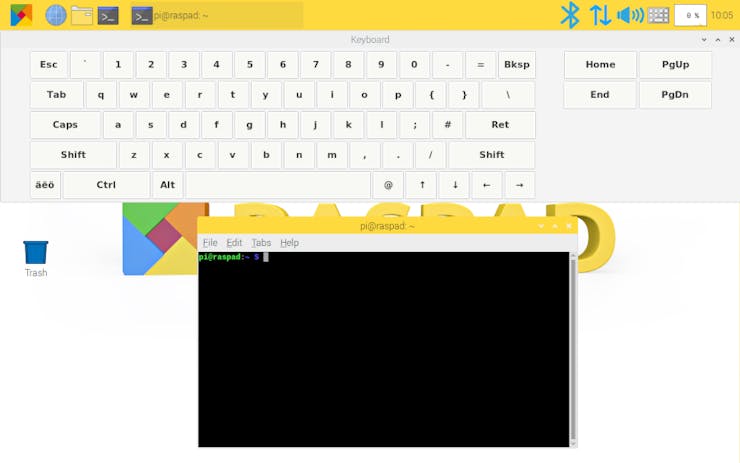
Worse, though, is a key security issue: The Raspberry Pi's SSH interface is enabled by default, while the username and password are set to "pi" and "raspad" respectively. Unlike Raspberry Pi OS proper, there's no prompt to change the password on first boot nor any warning that leaving the SSH open with a common password is a major security no-no — and with SunFounder looking to sell the tablet to educational users, that's a serious oversight.
UPDATE (9/14/20): SunFounder has indicated that SSH should be disabled by default, and will publish new operating system images to correct the issue.
As a final blow, SunFounder has not published an apt repository for its custom packages — meaning while everything from the Rasperry Pi repositories will be kept up-to-date, SunFounder's own software won't be included.
Conclusion
All this isn't to say there's nothing to recommend the RasPad 3. It's an undeniably neat solution, and keeping power management and the like to a separate daughterboard means it's possible to replace SunFounder's software with stock Raspberry Pi OS or any other Pi-compatible operating system without losing too much functionality, bar the automatic display rotation from the accelerometer.

The pricing is keen, too: At $149 excluding optional accessories - an "Early Bird" price which, naughtily, appears to be the standard pricing with SunFounder simply increasing the quantities available as the "limited" reward fills - the RasPad 3 is a little under twice the price of the official Raspberry Pi 7" touchscreen display but offers a bigger and higher-resolution panel, stereo speakers, a battery, and a portable case.
There have been corners cut to reach that pricing, though: The quality of the display is lower than you would expect from an IPS panel, with poorer viewing angles, and suffers from considerable backlight bleed. Its maximum brightness is surprisingly low, too — which coupled with the glossy finish to the scratch-resistant glass front means it isn't a device you'll want to use in direct sunlight. The battery falls well short of its claimed five-hour runtime, as well: In a simple video playback test the RasPad 3 abruptly powered off at the 2 hours and 21 minute mark.
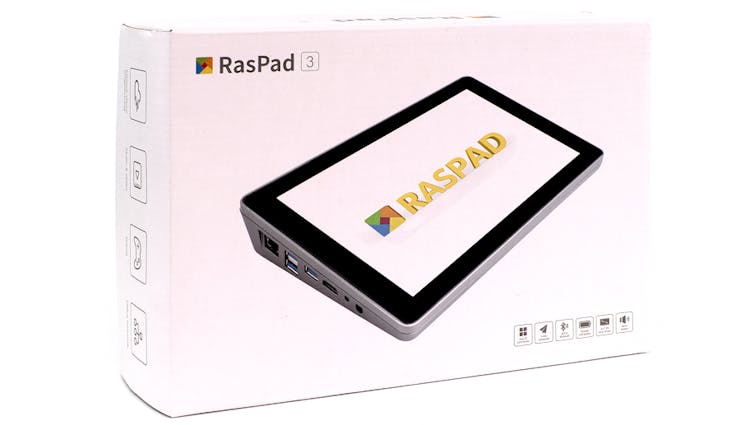
If you can get past those issues, the RasPad 3 delivers exactly what it promises: an all-in-one, self-powered, tablet-like conversion kit for the Raspberry Pi 4. For educational users, there's also the added bonus of the company's promised 14-lesson bundle for the pre-loaded Ezblock Studio visual programming environment.
The RasPad 3 is now funding via Kickstarter, and has already passed its modest $30,000 goal; delivery is scheduled for December this year.
Source:
By Gareth Halfacree
https://www.hackster.io/news/hands-on-with-the-raspad-3-an-all-in-one-tablet-conversion-kit-for-the-raspberry-pi-4-206423a3ba70

